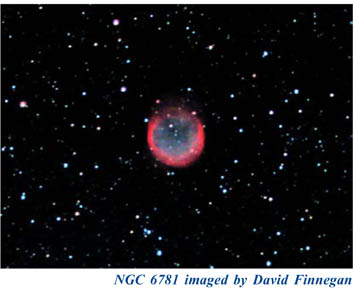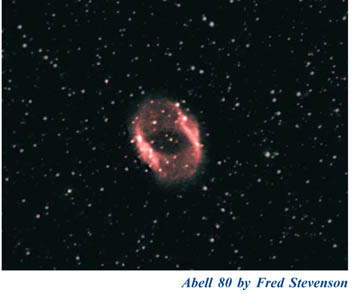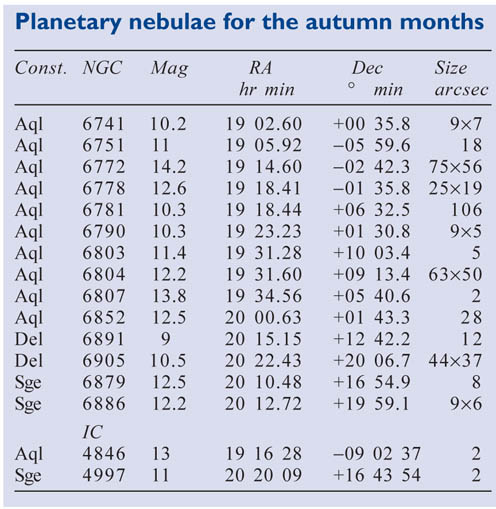Some faint planetary nebulae for the autumn
2015 September 29
 Now we are well into autumn, it is good to have some longer dark nights. And before they disappear from sight, why not hunt down some planetary nebulae in Aquila, Delphinus and Sagitta.
Now we are well into autumn, it is good to have some longer dark nights. And before they disappear from sight, why not hunt down some planetary nebulae in Aquila, Delphinus and Sagitta.
Planetary nebulae (PNe) are one of life’s end points for fairly average stars, so we tend to find more PNe in the constellations with the Milky Way running through them. This does make identification in the rich star fields difficult sometimes. And many PNe have a rather small apparent diameter, and often appear stellar.
In days of old, amateurs often used a prism held near the eyepiece to try to distinguish a PN from the stars. The prism would spread out the light of the stars, but the PN would remain as a point as most of the light of the PN is in the bright emission lines, with OIII being the most prominent. I am not sure many amateurs still use this method (I never have, but if I can find a suitable prism I will give it a try), but I would be interested to hear from anyone that still does, or has in the past. 
These days it is more common to use a narrowband filter to achieve a similar result – by using an OIII narrowband filter held over the eyepiece, the stars will be dimmed, but the PNe should stay about the same brightness. By either ‘flicking’ the filter over the eyepiece, or tilting the filter, you should see the stars blinking and the PNe staying about the same.
 The New General Catalogue has ten PNe listed in Aquila, two in Delphinus and two in Sagitta (see Table). Of course Delphinus and Sagitta are smaller constellations. And there are a couple of Index Catalogue PNe to be found in Aql and Sge.
The New General Catalogue has ten PNe listed in Aquila, two in Delphinus and two in Sagitta (see Table). Of course Delphinus and Sagitta are smaller constellations. And there are a couple of Index Catalogue PNe to be found in Aql and Sge.
Imaging of PNe is more of a specialised pursuit, suiting those with long focal length telescopes, and there are not so many people imaging these currently. The traditional Schmidt-Cassegrain is a good instrument for the purpose. Good polar alignment, periodic error correction, and careful guiding are necessary to eliminate tracking errors at high image scales. But whatever telescope you have it is worth having a go.
Visual observations and images would be welcomed by the Director. Some PN images by Deep Sky Section members are given here and on the cover of this Journal.
Callum Potter, Director, Deep Sky Section
| The British Astronomical Association supports amateur astronomers around the UK and the rest of the world. Find out more about the BAA or join us. |
